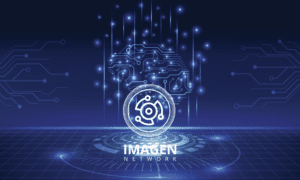As technology advances at a rapid pace, so does the pile of discarded electronics we leave behind. Electronic waste—commonly known as e-waste—refers to any electronic item that’s no longer wanted or functional. But the term is broad, and many people don’t realize just how many everyday items qualify.
Understanding what constitutes e-waste is the first step to responsible disposal and recycling. Below is a comprehensive breakdown of the many types of e-waste, why they’re classified as such, and the valuable (and hazardous) materials they contain.
- Computers and Laptops
These are among the most commonly recycled e-waste items. Computers, whether desktops or laptops, are loaded with metals like gold, silver, aluminum, copper, and palladium, especially in their circuit boards and wiring.
They also contain hazardous materials such as lead in the solder and mercury in older screens. When improperly disposed of, these toxins can contaminate the environment, making computer recycling essential.
- Mobile Phones and Tablets
Smartphones and tablets may be small, but they pack a punch in both value and risk. These devices contain rare earth metals, lithium, and small amounts of precious metals like gold and silver.
Due to their high turnover rate, phones contribute significantly to the global e-waste problem. Proper recycling helps recover these resources and keeps harmful components like lithium-ion batteries out of landfills.
- Televisions and Monitors
Old CRT (cathode-ray tube) TVs and monitors contain leaded glass and phosphor, both of which are highly toxic. Modern flat-screen versions may include mercury, particularly in the backlighting.
Recycling facilities are equipped to handle these materials safely and separate reusable components, such as copper wiring and plastic casings.
- Printers, Scanners, and Fax Machines
These office staples often end up neglected in storage rooms once they break or become outdated. They contain plastic, steel, and small circuit boards that can be recovered.
They may also include ink cartridges and toner, which can be toxic if not disposed of correctly. Some manufacturers have return programs, but local recycling centers are often the most convenient option.
- Small Household Appliances
Think toasters, microwaves, blenders, and even hair dryers. While these items may not have screens, they are still considered e-waste due to the presence of wiring, motors, and electronic components.
Most of these appliances contain copper, aluminum, and steel, making them worthwhile to recycle, especially in bulk.
- Large Appliances with Electronics
Items like refrigerators, washing machines, and air conditioners may be classified differently depending on your local facility. But because they often include circuit boards, control panels, and even refrigerants, they’re partly considered e-waste.
These items must be dismantled properly to remove hazardous refrigerants like CFCs before the metal components can be recycled.
- Batteries
Rechargeable and single-use batteries—especially lithium-ion, nickel-cadmium, and lead-acid types—are e-waste. Improperly discarded batteries pose a major fire risk in landfills and release toxic chemicals.
Drop-off locations for batteries are often available in electronics stores, but they can also be recycled as part of a Michigan electronics recycling program when bundled with devices.
- Cables and Chargers
Most people have a drawer full of old phone chargers, USB cables, and power adapters. These small items are rich in copper wire and plastic insulation and are fully recyclable, even if they seem insignificant.
Their small size makes them easy to ignore, but when recycled together, they can contribute greatly to metal recovery.
- Gaming Consoles and Entertainment Systems
Game consoles, DVD players, and stereo systems fall under the e-waste category due to their circuit boards, metal casings, and internal wiring. They also contain rare earth elements used in graphics processing units and speakers.
Recycling these devices recovers these valuable components and prevents electronic clutter from turning into a toxic burden.
- Lighting and Smart Devices
Fluorescent bulbs, smart thermostats, and connected home gadgets like voice assistants or smart plugs are considered e-waste as well. Many of these contain mercury, glass, and electronic chips that require careful disposal.
As smart home technology becomes more common, these items are contributing more to the growing e-waste stream.
Why Proper Classification and Recycling Matters
Knowing what qualifies as e-waste is more than just trivia—it’s the key to protecting the environment and conserving resources. When recycled correctly, these items prevent toxic substances from entering our ecosystems and allow valuable metals to be reused instead of mined.
Unfortunately, millions of tons of e-waste are still thrown in the trash each year, with much of it ending up in developing countries where it’s dismantled in unsafe conditions.
Take Action: What You Can Do
- Sort your devices and don’t let them pile up in drawers or basements.
- Research local drop-off sites or municipal events for electronics recycling.
- Donate functioning electronics to schools, shelters, or nonprofits.
- Buy responsibly—opt for longer-lasting devices and brands with recycling programs.
E-waste may seem like a small piece of the global waste puzzle, but every item counts. With growing awareness and accessible recycling options, everyone can play a part in keeping electronics out of landfills and in the hands of responsible recyclers.



































